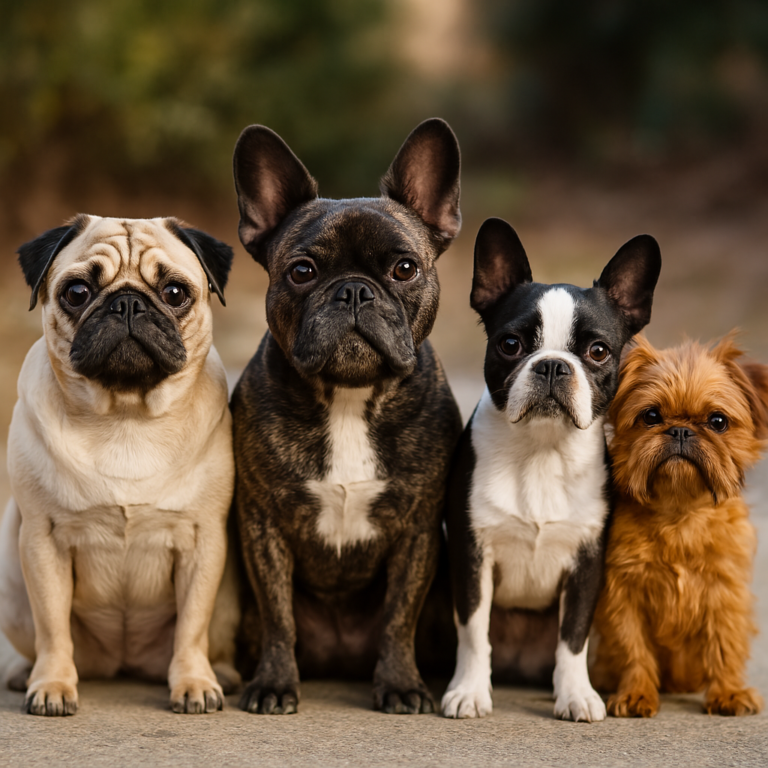Pug vs Boston Terrier: Which Breed is Right for You?

Choosing between a Pug and a Boston Terrier can be a tough decision, as both breeds are small, affectionate, and full of personality. While they share some similarities, their differences in energy levels, temperament, and care requirements may determine which is a better fit for your lifestyle. This guide will explore the key characteristics of both breeds to help you make an informed choice.
Breed Overview
Pug
Pugs are known for their charming, wrinkled faces and affectionate nature. Originating from China, these dogs were bred as companion animals and are deeply loyal to their owners. They are social, loving, and thrive in households where they receive plenty of attention.
Boston Terrier
Boston Terriers, often called “The American Gentleman,” are a lively and intelligent breed known for their tuxedo-like coat and friendly demeanor. Originally bred as a cross between English Bulldogs and White English Terriers, they are playful, energetic, and adaptable to various living environments.
Appearance and Physical Traits
Size and Build
- Pug: Small and stocky, weighing 14-18 pounds with a short, muscular build.
- Boston Terrier: Slightly larger, weighing 12-25 pounds, with a leaner, more athletic frame.
Coat and Grooming
- Pug: Short, smooth coat that sheds heavily. Requires regular brushing to manage shedding.
- Boston Terrier: Short, fine coat that sheds minimally. Easier to maintain with occasional brushing.
Personality and Temperament
Sociability
- Pug: Extremely affectionate and social. Loves human interaction and tends to be a Velcro dog.
- Boston Terrier: Friendly and outgoing but slightly more independent than Pugs.
Energy Levels
- Pug: Low to moderate energy levels. Prefers lounging and short play sessions.
- Boston Terrier: High energy. Enjoys playtime, walks, and mental stimulation.
Trainability
- Pug: Can be stubborn but responds well to positive reinforcement training.
- Boston Terrier: Intelligent and eager to please, making them easier to train.
Health and Lifespan
Common Health Issues
- Pug: Prone to breathing problems (brachycephalic syndrome), obesity, and eye issues.
- Boston Terrier: Also brachycephalic but generally healthier, though they can suffer from cataracts and allergies.
Lifespan
- Pug: 12-15 years
- Boston Terrier: 11-13 years
Exercise and Activity Needs
- Pug: Needs minimal exercise. Short daily walks and light playtime are sufficient.
- Boston Terrier: Requires more exercise and mental stimulation to prevent boredom.
Which Breed is Best for You?
- Choose a Pug if you prefer a laid-back, affectionate companion that enjoys relaxing by your side.
- Choose a Boston Terrier if you want a playful, energetic dog that enjoys regular activities and training.
Conclusion
Both Pugs and Boston Terriers make excellent companion pets, but their differences in energy levels, trainability, and health may help you decide which breed suits your lifestyle best. Whether you want a cuddly, relaxed companion or a lively, active pup, both breeds bring joy and affection to their owners.
Related Articles You Might Find Helpful
If you’re considering either of these breeds, check out these helpful articles for more insights:






